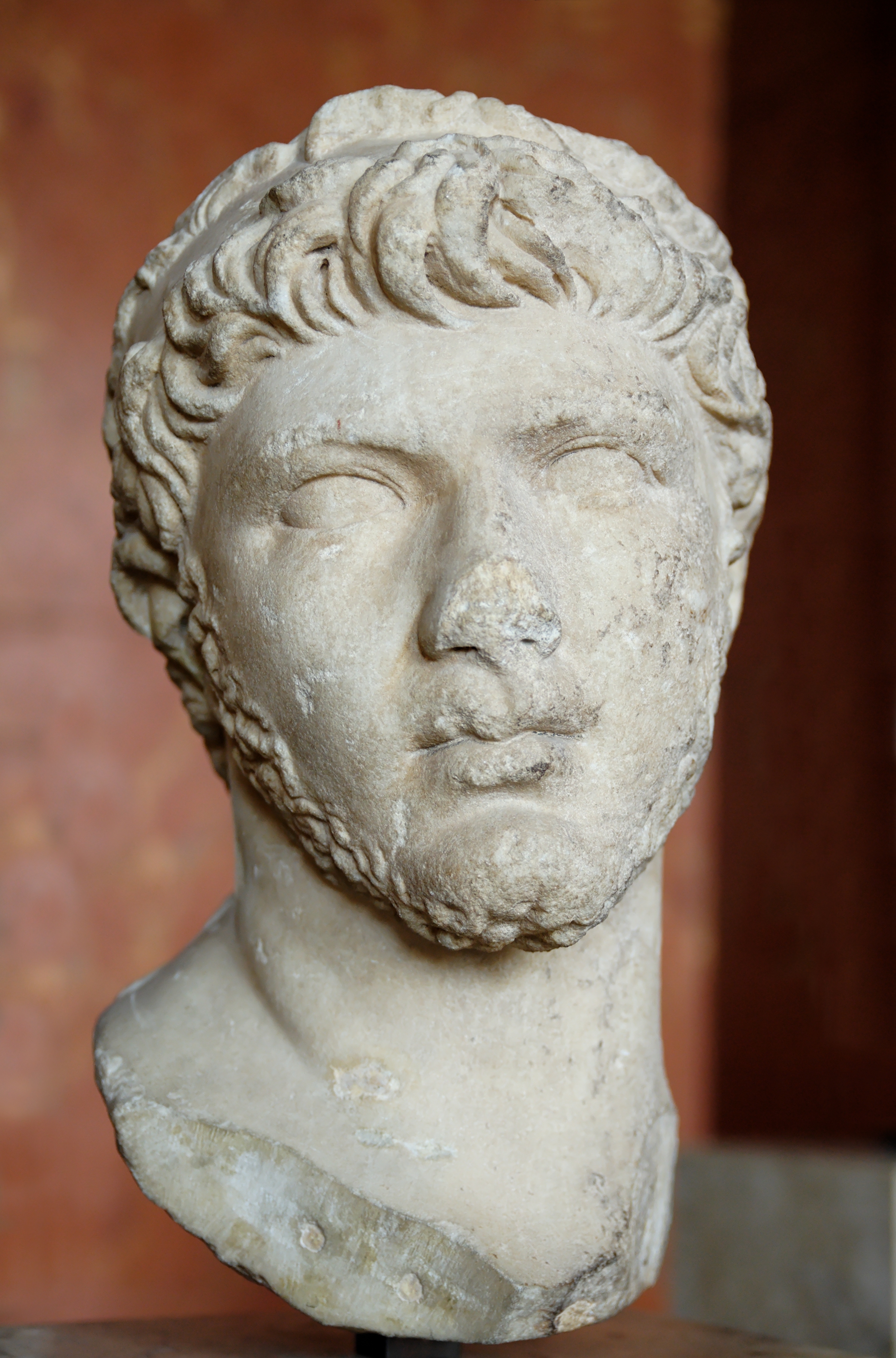
Ptolemy of Mauretania, Son of Cleopatra Selene & Juba II
One of the mysteries surrounding the Ptolemaic dynasty is exactly why Cleopatra Selene’s son, Ptolemy, was murdered by his first cousin, Caligula. The traditional belief is that Caligula was simply a madman who resorted to crazy rages whenever the whim struck him and that Ptolemy ran into the emperor on one of his bad days. (Caligula’s reputation as a Roman emperor isn’t enhanced by the fact that he made his favorite horse a senator. Unless, of course, one is willing to believe that this was a political statement of contempt for that august body.)
We are traditionally told that after having been invited to Rome in 40 CE, Selene’s son appeared in the arena with his cousin, the emperor, while wearing a splendid cloak. This was undoubtedly a purple cloak because Mauretania was famed for its Gaetulian purple dye industry. The Mauretanian royal family would have flaunted that purple for all it was worth. However, purple was the color of royalty. Certainly, as Cleopatra VII’s grandson, Ptolemy would have had more royal blood in his little finger than the emperor had in his whole body–and that may have been the problem. As the legend goes, Caligula didn’t take kindly to the idea that anyone should wear royal purple better than he did, and descended upon his first cousin in a murderous rage.
However, modern scholars wonder exactly how crazy Caligula really was–and whether or not Ptolemy was murdered for entirely rational political reasons. Some have speculated that the emperor didn’t take kindly to Ptolemy’s bragging about his successful military campaign against Tacfarinas. Anthony Barret argues that Caligula may have suspected Ptolemy in a recent conspiracy against his life.
Another interesting interpretation of this incident–and one that helped motivate my own narrative arc in my trilogy about Cleopatra Selene–is that Caligula wasn’t angry about the cloak at all. He was sent into a fury by a mob’s jest that Cleopatra Selene’s son was the real Caesar.
My favorite theory, however, involves Cleopatra Selene’s unique status as a representative of Isis worship. Within the faith, she was a religious symbol from birth. Once Isis worship was banned from Rome, she remained its most prominent advocate. While Augustus and Agrippa were both busily persecuting Isis worshippers in Rome, she and Juba were building a giant Iseum in Mauretania–one that would later be referenced to as a home for sacred crocodiles.
However, after the death of Tiberius, Isis became the darling of Rome. Caligula considered himself to be the chief priest of Isis and built her an enormous new temple. It has been theorized that Ptolemy was invited to Rome to help consecrate this temple–a natural choice, considering his heritage. However, the cloak he wore in addition to his ancestry may have led people to assume that he was asserting a claim to be More-A-Child-Of-Isis-Than-Thou, something that Caligula wouldn’t have been able to stomach.


I think the senatorial horse was intended as political statment. And if the senators were anything like todays politicians, the horse would have done a better job, too. 😀
I suspect you might be right! On a side note, Gabriele, I’ve been doing some research trying to date Cleopatra Selene’s granddaughter, Drusilla and running into your time period a bit. I’m hoping I can ask you some questions and you can help me narrow down the possibilities!
If that was intended for the Senate it was neither witty or funny. Caligula was just stupid,evil and crass otherwise he would not have been murdered by his own guard.
Oh, I don’t know. People are murdered for being perfectly nice and awesome all the time.
Interesting essay. I am currently developing a pen and paper RPG set during the reign of caligula (it will be alternate history with some unusual twists) and am about to playtest an adventure featuring Ptolemy in 38 AD. This gave me some cool ideas. Do you know of any good resources on Ptolemy and the Kingdom of Mauretania.
Thanks for stopping by! That sounds like a fun game. I highly recommend Duane Roller’s World of Juba II and Cleopatra Selene. Also, my extended bibliographies on this website.
Thanks. I will check out both.